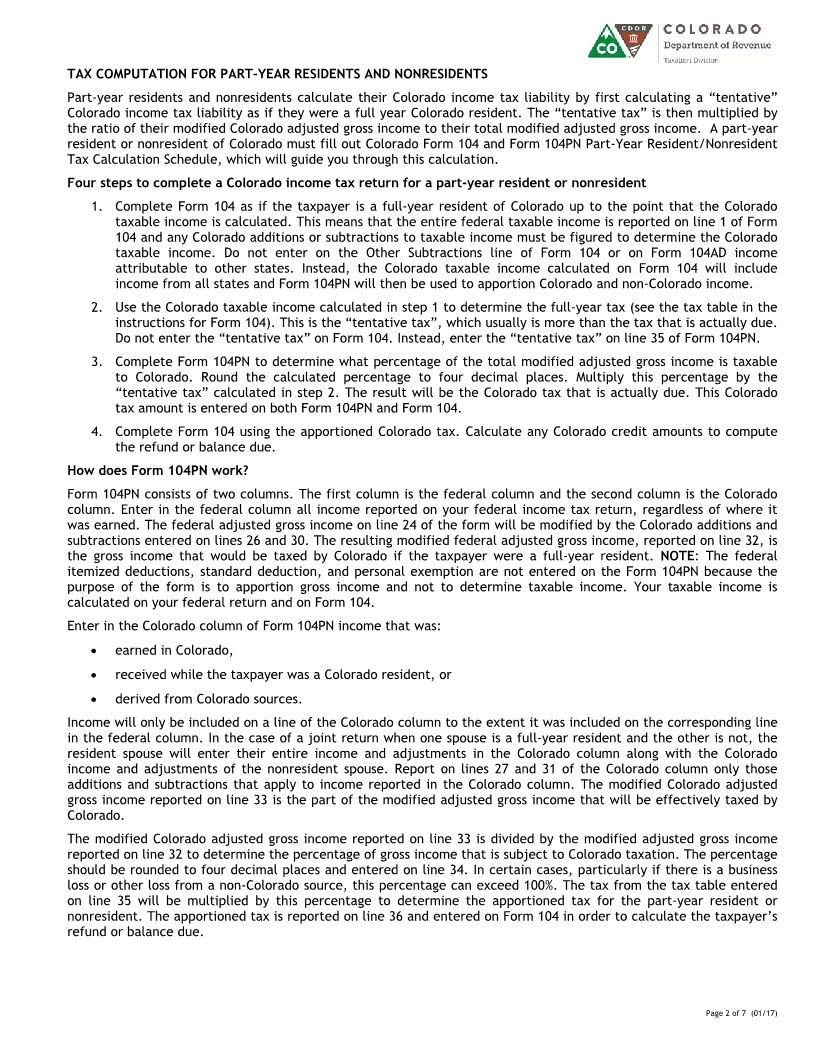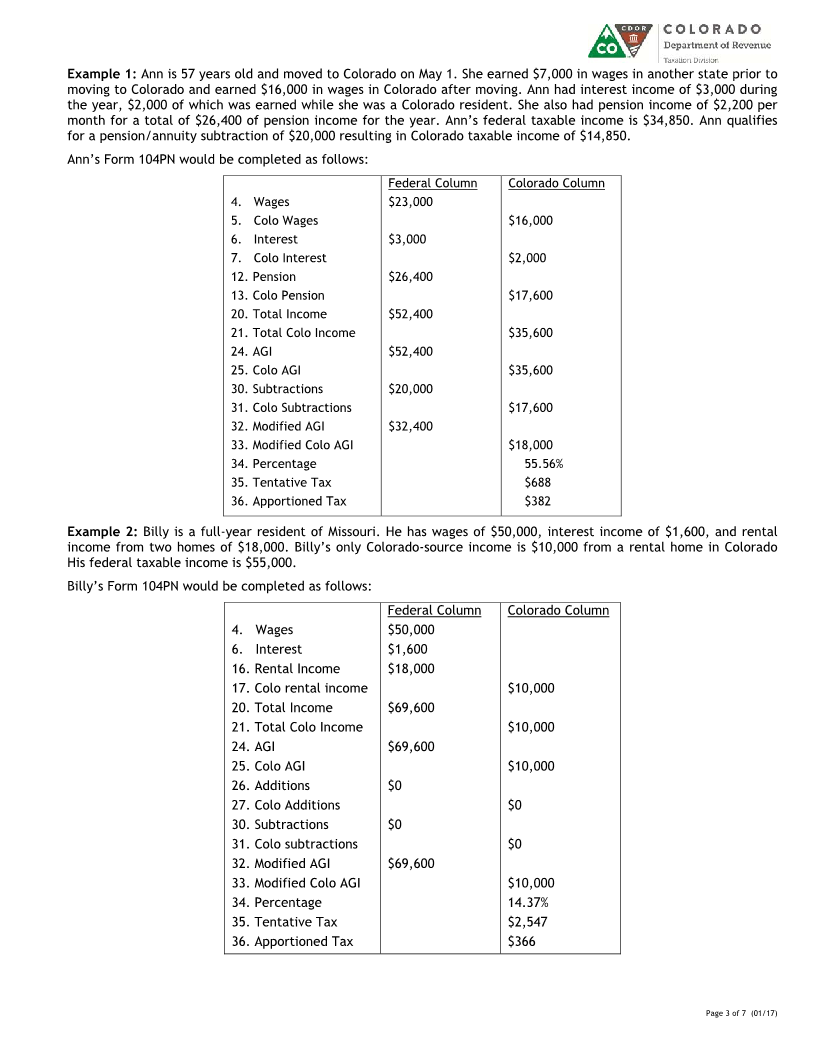
Enlarge image
Income 6: Part-Year Resident and Nonresident Individuals
HOW IS COLORADO RESIDENCY DETERMINED?
A person is considered a “Colorado resident” for income tax purposes if Colorado is the person’s state of domicile or
the person qualifies as a “statutory” resident. When evaluating whether a person’s state of domicile is Colorado, the
Department of Revenue will consider, among other factors, Colorado voter registration, Colorado vehicle registration,
Colorado driver’s license, school registration, property ownership, and residence of spouse and children. A person is a
“statutory” resident of Colorado if the person maintains a permanent place of abode in Colorado and spends, in
aggregate, more than six months of the tax year in Colorado. For a more complete discussion of domicile and
statutory residency see Department Regulation 39-22-103(8)(A).
See FYI Income 21 for special residency rules that apply to military servicepersons and their spouses.
WHO IS A COLORADO PART-YEAR RESIDENT?
A part-year resident is an individual who was a Colorado resident for only part of the tax year. This includes a person
who moved into Colorado during the tax year with the intention of making it their home and a Colorado resident who
moved out of Colorado during the tax year with the intention of making their home elsewhere. A part-year Colorado
resident is required to file a Colorado income tax return if they:
are required to file a federal income tax return, and
had taxable income during that part of the year they were a Colorado resident, or had taxable Colorado-
source income when they were not a Colorado resident.
WHO IS A COLORADO NONRESIDENT?
A nonresident is an individual who was not a Colorado resident at any time during the tax year. However, the person
may have temporarily lived and/or worked in Colorado. A nonresident is required to file a Colorado income tax return
if they:
are required to file a federal income tax return, and
had taxable Colorado-source income.
COLORADO SOURCE INCOME
Income earned by an individual while they are not a resident of Colorado will be taxed in Colorado only if it is
considered Colorado-source income and is included in their modified federal adjusted gross income. For Colorado
purposes, the modified adjusted gross income is the federal adjusted gross income plus or minus the applicable
additions and subtractions to federal taxable income that are reported on the Colorado Form 104.
The following types of income are Colorado-source income.
1. Income from a business, trade, profession or occupation carried on in Colorado. This includes income from
any business conducted in Colorado and payments, including wages, received for work performed in Colorado,
either as an independent contractor or as an employee.
2. Income from the ownership of any interest in real or tangible personal property in Colorado. This includes
rents and royalties from real or tangible personal property located in Colorado and the gain or loss from the
sale or other disposition of such property.
3. Pass-through income attributable to sources in Colorado. This includes income earned, received, or realized
as a partner, member, or shareholder in a partnership, limited liability company, or S corporation, to the
extent such income is from Colorado sources.
4. Beneficiary income attributable to sources in Colorado. This includes income earned, received, or realized as
a beneficiary of an estate or trust, to the extent such income is from Colorado sources.
5. Income from the use of intangible property in Colorado. This includes income from intangible property to the
extent such property is employed in a trade, business, profession or occupation carried-on in Colorado.
Examples of such income include interest income from a finance business located in or active in Colorado, or
royalty income from the use of a patent, trademark, or copyright employed in the active conduct of a
Colorado business operation.
6. Income from gambling and games of chance conducted in Colorado. This includes limited stakes gambling,
bingo, raffle, Colorado Lottery, sweepstakes, door prizes and other games of change conducted in Colorado.
Page 1 of 7 (01/17)





